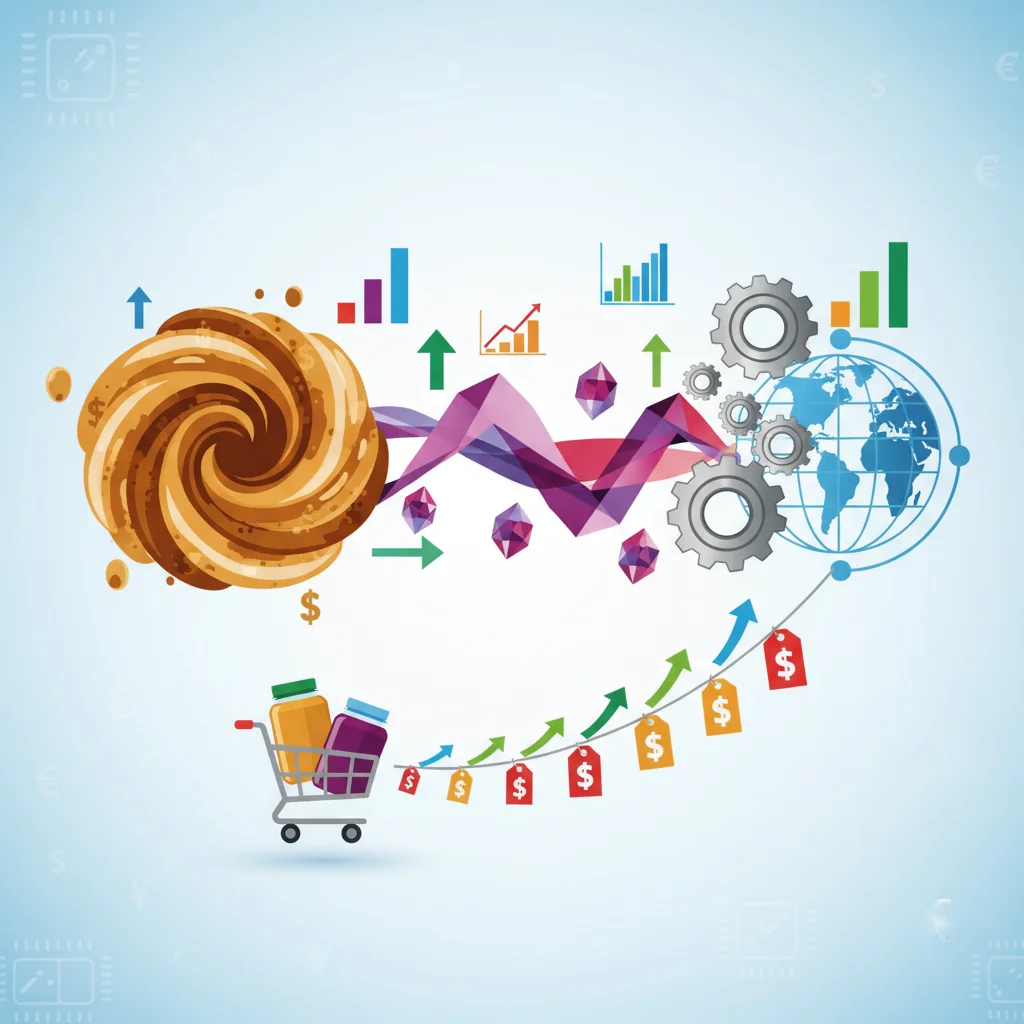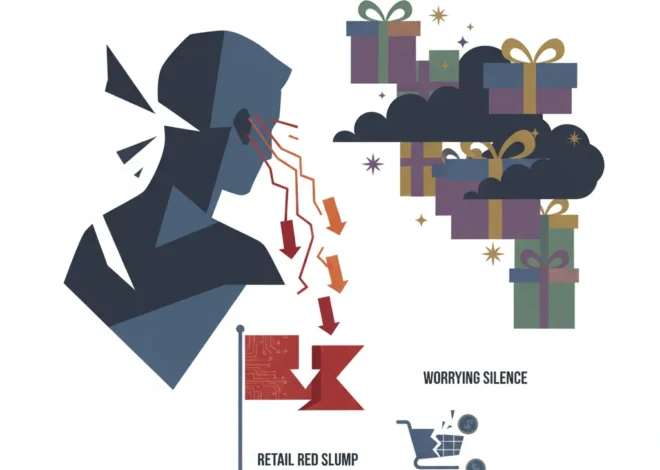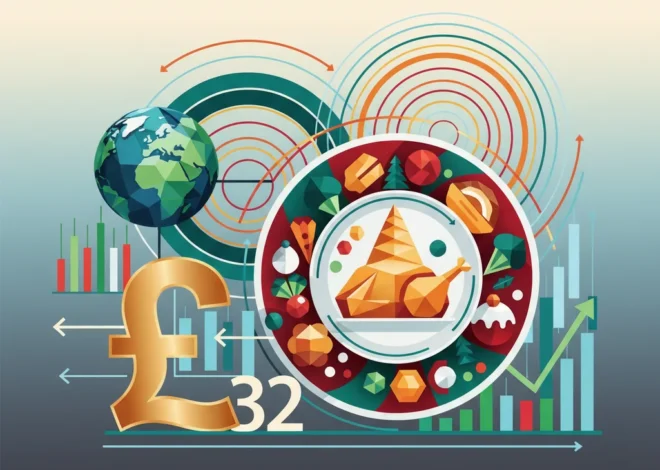
The Peanut Butter & Jelly Indicator: Why Your Lunch Explains the Global Economy
It often starts with something small. You’re at the grocery store, picking up the basics, and you notice the price of your favorite peanut butter has crept up again. The jelly is a little more expensive, too. You might sigh, put it in your cart, and move on. But what if that seemingly minor price hike on your lunch staple is more than just an annoyance? What if it’s a powerful economic indicator, telling a story that complex financial reports and stock market tickers often miss?
This is the brilliant observation captured in a recent letter to the Financial Times by Hilary Barnfather. While the publication was detailing the staggering “$558bn in ‘paper’ losses” on bonds held by US banks, Ms. Barnfather pointed to a different, more tangible, kind of loss: the one happening in our kitchens.
She wrote, “The peanut butter and jelly sandwich is a staple of the American diet. Over the past year the price of peanut butter has increased by 13.1 per cent, while the price of jelly is up 17 per cent. These are not just statistics; they represent a real decline in the purchasing power of the average American.”
This simple, powerful message cuts through the noise of high finance. It establishes what we’ll call the “Peanut Butter & Jelly Indicator”—a real-world measure of economic health that every investor, business leader, and consumer should be watching. It’s a story of two economies: the abstract world of financial instruments and the concrete reality of the grocery aisle. And the growing gap between them has profound implications for the stock market, the banking sector, and the future of our economy.
The Two Sides of the Inflation Coin
To truly grasp the significance of the PB&J Indicator, we must first understand the two parallel dramas unfolding in our economy, both orchestrated by the Federal Reserve’s fight against inflation.
1. The Main Street Reality: Your Grocery Bill
When the Fed raises interest rates, its primary goal is to cool down the economy to stop prices from spiraling out of control. But as Ms. Barnfather’s letter highlights, for many households, the damage is already done. The cost of living has surged, and wages have struggled to keep pace. This isn’t just a feeling; it’s a statistical reality. While headline inflation numbers may fluctuate, the cumulative effect of price increases on essential goods has fundamentally altered household budgets.
Let’s break down the components of a simple lunch to see how this “kitchen table economics” plays out. The numbers tell a stark story about the erosion of purchasing power.
The table below compares recent price increases for common food staples against the broader Consumer Price Index (CPI), illustrating the acute pressure on household food budgets.
| Item/Index | Approximate Year-Over-Year Price Increase (%) | Source |
|---|---|---|
| Peanut Butter | 13.1% | Financial Times Letter |
| Jelly / Jam / Preserves | 17.0% | Financial Times Letter |
| Bread | ~10-15% | Bureau of Labor Statistics (CPI Data) |
| Overall CPI (All Items) | ~3-4% | Bureau of Labor Statistics (CPI Data) |
This data reveals a critical disconnect. While the official inflation rate might be reported as a modest single-digit number, the prices of non-discretionary items that people must buy—like food—are often rising at double-digit rates. This is the essence of the PB&J Indicator: it measures the economic pain that broad statistics can obscure.
Argentina's High-Stakes Bet: Milei's Election Win Greenlights Radical Economic "Shock Therapy"
2. The Wall Street Problem: Unrealized Losses in Banking
Simultaneously, the Fed’s rate hikes have created a massive, albeit quieter, problem within the financial system. When interest rates go up, the value of existing, lower-rate bonds goes down. Banks hold trillions of dollars in these bonds (like U.S. Treasuries and mortgage-backed securities) as safe, stable assets.
As rates rose at a historic pace, the market value of these bonds plummeted. This created huge “unrealized losses” on bank balance sheets. They are “unrealized” because the bank hasn’t sold the bond yet; if they hold it to maturity, they will get their full principal back. However, if a bank is forced to sell these bonds to meet depositor withdrawals—as we saw with the collapse of Silicon Valley Bank—those paper losses become very real, very quickly. According to the FDIC, U.S. banks were sitting on over $558.4 billion in unrealized losses on securities at the end of Q3 2023. This is the ticking clock that regulators and finance professionals are watching.
So, we have a paradox. The very policy designed to alleviate the pain of the PB&J Indicator for consumers is creating systemic fragility in the banking sector. It’s a high-wire act with little room for error.
Investors and business leaders who dismiss the PB&J Indicator as mere anecdotal evidence are making a critical mistake. Consumer spending accounts for nearly 70% of U.S. economic activity. If the consumer is being squeezed to a breaking point by the cost of essentials, that will inevitably ripple upwards, impacting corporate revenues, profit margins, and, ultimately, stock valuations. The PB&J Indicator is a lead indicator for future demand destruction. Ignoring it is like ignoring the engine light on your car’s dashboard—you might be able to keep driving for a while, but a breakdown is inevitable.
Implications for Investing, Business, and Financial Technology
Understanding this dual reality is crucial for navigating today’s complex financial environment. The implications cut across every sector of the economy.
For Investors and Trading Professionals
The current climate demands a more nuanced approach to investing. The days of simply betting on broad market growth are paused. Instead, successful investing requires a focus on resilience.
- Value Over Hype: Companies with strong balance sheets, consistent cash flow, and the ability to pass on costs (pricing power) become more attractive. Think consumer staples and healthcare over speculative tech.
- Inflation Hedges: Assets that traditionally perform well during inflationary periods, such as commodities, real estate, and Treasury Inflation-Protected Securities (TIPS), are critical components of a diversified portfolio.
- Focus on Dividends: In a volatile stock market, the reliable income from dividend-paying stocks provides a valuable cushion and a tangible return when capital appreciation is uncertain.
For those involved in active trading, a deep understanding of inflation data and its impact on both consumer behavior and Fed policy is paramount. Every CPI report release now triggers significant market volatility as algorithms and human traders alike try to predict the Fed’s next move.
The Unpopular Tax We Might Actually Need: A Contrarian Defence of Stamp Duty
For Business Leaders
For corporations, the PB&J Indicator is a direct signal from their customer base. Navigating this environment requires a delicate balance.
- Strategic Pricing: How much can you raise prices to cover your own rising costs before customers walk away? This requires sophisticated data analysis and a deep understanding of customer elasticity.
- Operational Efficiency: With margins under pressure, streamlining supply chains, optimizing inventory, and leveraging technology to reduce overhead are no longer just best practices—they are survival imperatives.
- Employee Retention: Your employees are also consumers. They are experiencing the same squeeze. This makes competitive wages, robust benefits, and a supportive work culture more important than ever for retaining talent.
The Role of Fintech and Blockchain
Financial technology is emerging as a critical tool for both consumers and institutions in this challenging economy. Fintech innovation is helping people cope with the pressures of inflation through sophisticated budgeting apps, automated savings tools, and platforms that provide access to high-yield savings accounts, which were once the exclusive domain of the wealthy.
On the institutional side, financial technology enables more sophisticated risk management for banks tracking their bond portfolios. AI-driven models can stress-test balance sheets against various interest rate scenarios, providing early warnings of potential liquidity crises.
Even emerging technologies like blockchain are part of the conversation. While volatile, some proponents argue that decentralized finance (DeFi) and assets like Bitcoin offer a hedge against traditional currency debasement caused by inflation, though this remains a highly debated and high-risk thesis. What is certain is that technology is providing new tools to analyze and react to the economic forces at play.
Beyond the Paycheck: A Tech Investor's Guide to Building a Recession-Proof Career
Conclusion: Don’t Ignore Your Lunch
The price of a peanut butter and jelly sandwich may seem like a trivial data point in a world of complex economics, dominated by discussions of quantitative easing and bond duration. But as Hilary Barnfather’s letter so eloquently reminds us, it is anything but trivial.
The PB&J Indicator is a symbol of the lived experience of the economy. It represents the collective financial health of the households that power our businesses and markets. When that indicator flashes red—when the cost of simple staples becomes a source of stress—it signals a deep-seated instability that no amount of positive stock market performance can fully mask.
For anyone involved in finance, from the professional investor managing billions to the individual planning for retirement, the lesson is clear. Pay attention to the macroeconomic reports, but don’t ignore the microeconomic reality. The future of the economy isn’t just written in the Federal Reserve’s meeting minutes; it’s also written on the price tags at your local grocery store.


